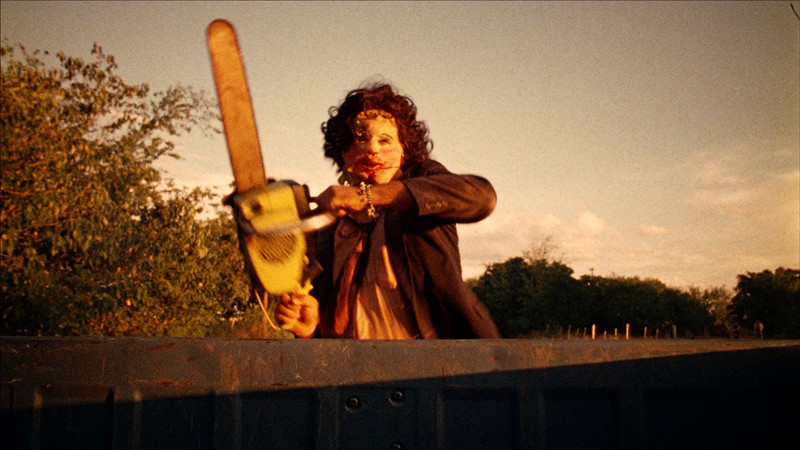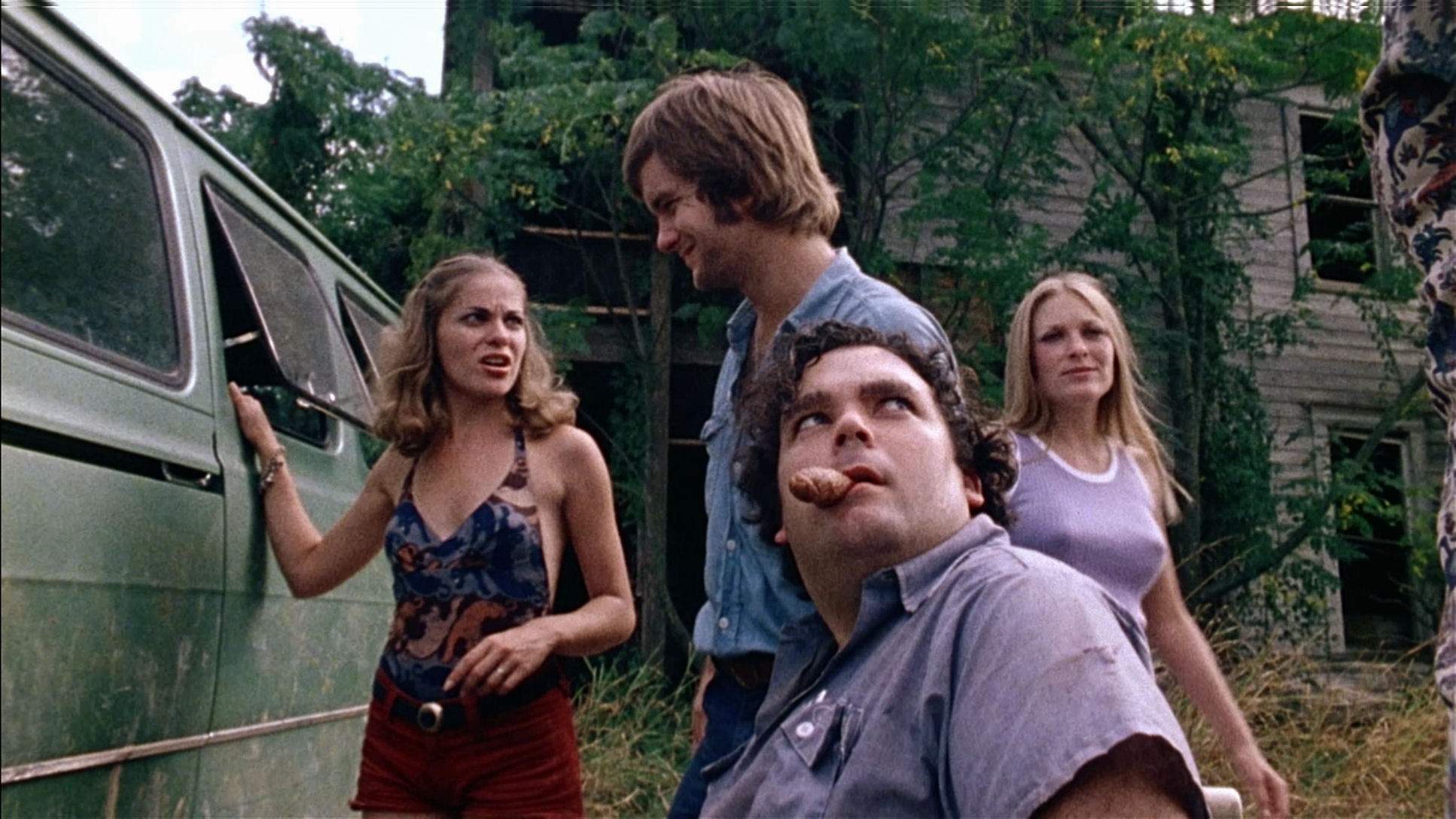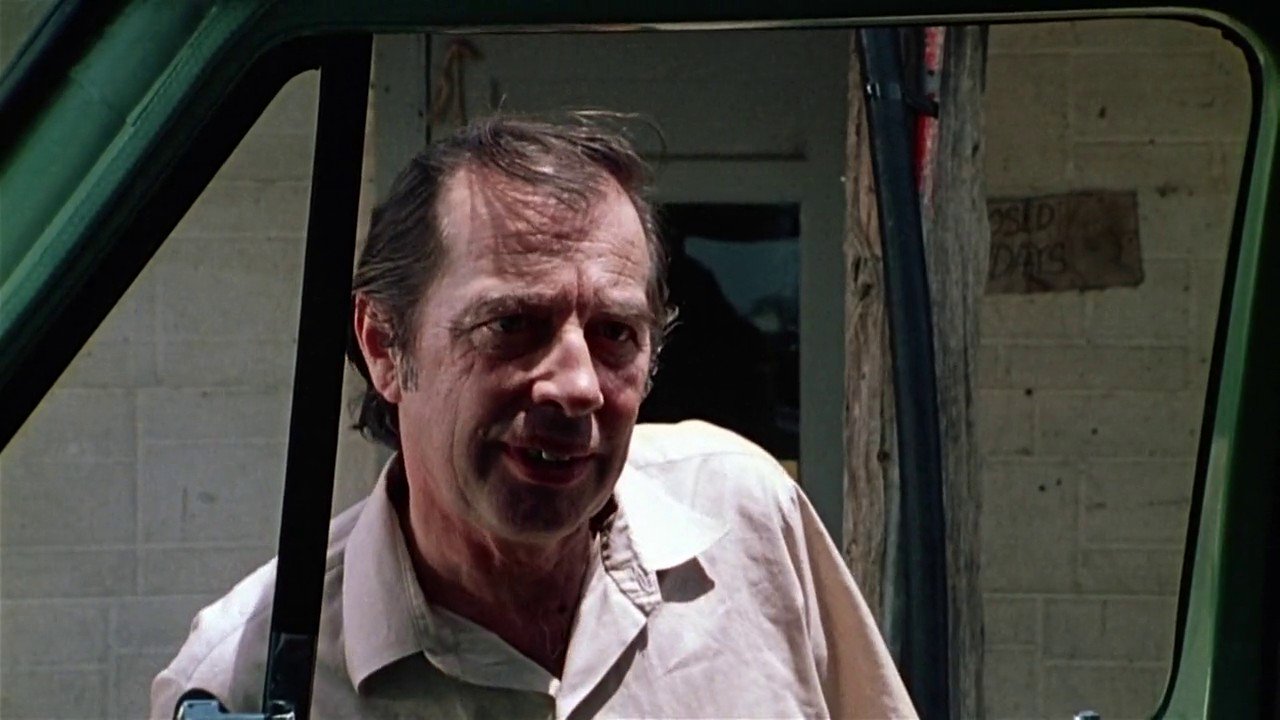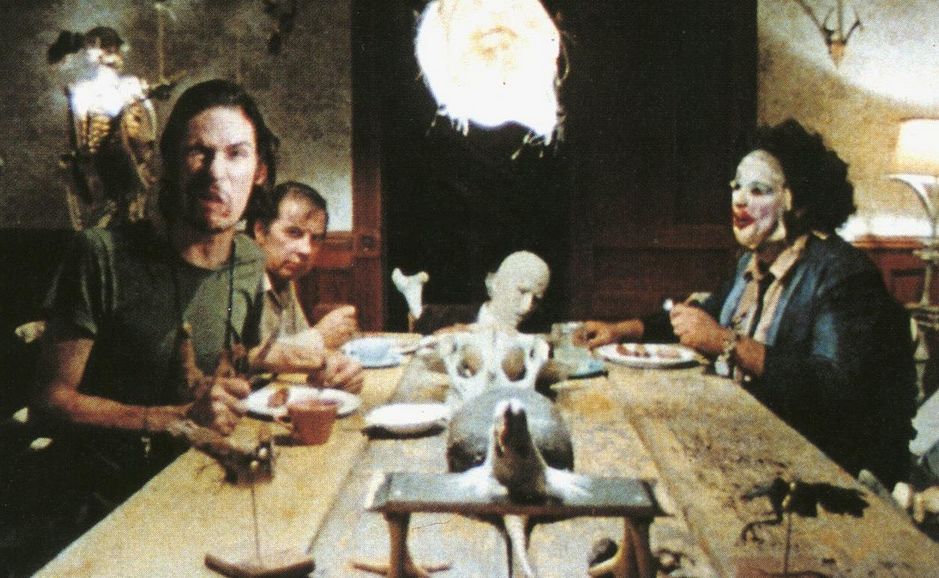
Over the summer we lost a legend in the world of horror cinema when film director Tobe Hooper passed away at the age of 74. The response on Twitter coming from Hollywood all echo a similar theme; from John Carpenter, Eli Roth, James Wan and Stephen King, everyone praised the director as a kindhearted individual and a decent human being. Just about everyone remembers Hooper as one of the nicest person you could ever meet.
It’s surprising that such a good-natured man was responsible for one of the most disturbing and violent horror films in the history of cinema when “The Texas Chainsaw Massacre” was released in theaters in 1974.
Roger Ebert gave the following review for the film for the Chicago Sun-Times: “Horror and exploitation films almost always turn a profit if they’re brought in at the right price. So they provide a good starting place for ambitious would-be filmmakers who can’t get more conventional projects off the ground. “The Texas Chainsaw Massacre” belongs in a select company (with “Night of the Living Dead” and “Last House on the Left”) of films that are really a lot better than the genre requires. Not, however, that you’d necessarily enjoy seeing it.”
This classic low-budget horror film, produced on a $300,000 budget, was original and well made and didn’t rely on blood and gore to deliver its scares. Yet it was so intense and realistic that it became an unforgettable movie experience for anyone who watched it, and one of the most influential and important movies in the horror genre, making “The Texas Chainsaw Massacre” a masterpiece in horror cinema.
1. Realistic Horror

Shot on 16mm, “The Texas Chainsaw Massacre” feels almost like documentary because of its realism. Hooper based some of the story’s elements from the real-life Wisconsin serial killer Ed Gein, who was also the inspiration for the movies “Psycho” and “The Silence of the Lambs”.
Co-screenwriter Kim Henkel drew inspiration from a local crime story in the Texas area and has this to say about the case: “I definitely studied Gein but I also noticed a murder case in Houston at the time, a serial murderer you probably remember named Elmer Wayne Henley. He was a young man who recruited victims for an older homosexual man. I saw some news report where Elmer Wayne said, ‘I did these crimes, and I’m gonna stand up and take it like a man.’ Well, that struck me as interesting, that he had this conventional morality at that point. He wanted it known that, now that he was caught, he would do the right thing. So this kind of moral schizophrenia is something I tried to build into the characters.”
Since the characters and storyline are based off of real-life events, this helps the film achieve a sense of realism even while the viewer is watching insanity on the big screen. When the last surviving character, Sally, is trapped inside the house Leatherface shares with his other homicidal family members, the poor woman is tied up, gagged, bound and seated at a dinner table.
The scene descends into madness when they bring Grandpa into the dining room, a man so old he appears to be a corpse, but when Grandpa starts sucking the blood from a cut on Sally’s finger we see he is far from being dead and has a sickening lust for blood. And since Grandpa was known as the best killer at the old slaughterhouse, the family members want him to finish off Sally. They give Grandpa a hammer and he tries to smash in Sally’s skull but the old man is too weak to deliver the fatal blow.
Without question, this is one of the most disturbing scenes in the history of horror films and not because of its gore; the scene is so surreal as it captures a moment of authentic real-life horror on the movie screen. Because all too often, real life is way stranger than anything a filmmaker can put into a movie. However, Hooper was able to create something so close to reality by using a certain surrealistic insanity that the images and story is singe into the mind of the viewer, making “The Texas Chainsaw Massacre” a film you can’t easily forget after watching it.
2. Small Town USA

These small towns are well known for having God-fearing hospitable people living there, but they can also hide a dark underbelly unknown to the inhabitants of the small town and any unsuspecting visitor arriving there. The isolation is the real danger because if danger arrives there will be no one around to help.
Hooper really captures this with the sound design of the film, most notably with unnerving sound of the chainsaw roaring and the pleading screams coming from Sally as she tries to escape from danger. Both sounds are extremely loud which amplifies the fact that trapped in a small town confronted by danger, there’s no one you can count on for help because of its isolation.
Hooper also used the hospitable good nature of people living in a small town as a possible threat of danger. When Sally first escapes from Leatherface, she reaches a gas station and she receives help from the owner who claims he’ll call for help, but the owner is actually a member of Leatherface’s homicidal family and he abducts Sally bringing her right back to the danger from which she just escaped. While many believe living in a big city has more danger because of crime, Hooper shows there can be more danger lurking around in small town USA.
Critic Christopher Sharrett breaks down the social and political representation of that small town in his analysis of the film: “Hooper’s apocalyptic landscape is a desert wasteland of dissolution where a once vibrant myth is desiccated. The ideas and iconography of Cooper, Bret Harte and Francis Parkman are now transmogrified into yards of dying cattle, abandoned gasoline stations, defiled graveyards, crumbling mansions, and a ramshackle farmhouse of psychotic killers. The Texas Chainsaw Massacre is recognizable as a statement about the dead end of American experience.”
3. Leatherface

One of the most original and disturbing maniacs in film history. Based off of the real-life serial killer Ed Gein, who was famous for creating clothing and furniture out of human flesh, Leatherface is a modern day Frankenstein. But unlike the monster Dr. Frankenstein created, Leatherface seems more realistic because he could exist in real life. Armed with a chainsaw, he can tear apart a human body with his weapon, and his mask made from human flesh and his huge size make him an intimidating and scary antagonist.
Even though we never see Leatherface’s actual face in the movie, we do get a glimpse at his personality. When confronted and chastised by a family member, Leatherface appears docile and almost childlike, and while serving dinner Leatherface is wearing women’s clothes, suggesting he’s cross dresser as well. And when Sally finally escapes from danger, Leatherface does a bizarre dance, waving the chainsaw in the air; you can’t help but get the feeling that nothing can stop this maniac from killing.
Leatherface was the first in a series of horror movies featuring a regular man who turns into a monster; Michael Myers from “Halloween” would follow and so would Jason Voorhees from the ‘Friday the 13th’ franchise but we can see the influence started with the creation of LeatherFace.
4. Tobe Hooper

Next to “The Texas Chainsaw Massacre”, Hooper is also known for directing the film “Poltergeist”, released in 1982. There’s some controversy surrounding who actually directed the film with Steven Spielberg receiving a director’s credit on IMDb. However, one thing is clear – if Spielberg actually directed the film, he knew that if you attached the name Tobe Hooper to any horror film at that time in the 80s, it would receive instant credibility.
Long before the current golden age of television, Hooper directed the adaptation of Stephen King’s “Salem’s Lot” miniseries for television and proved to be one of King’s favorite adaptations of one of his books. The made-for-TV movie was terrifying and was so well done it received a theatrical release in Europe. And one of Hooper’s best and most underrated films would be “Lifeforce” released in 1985; it was a clever mix of science fiction, vampirism, and apocalyptic end of times.
Film critic Jeffrey M. Anderson had this to say about the film: “Seen today, it’s actually an astoundingly brave, weird movie that tries more and accomplishes more than many of today’s bland roller-coaster rides.” Out of all his films, “The Texas Chainsaw Massacre” remains Hooper’s greatest accomplishment, influencing a generation of filmmakers, and more than 40 years later, the film is still a powerful movie experience.
5. The 70’s Era of Horror Films

The 70s are regarded by many as the years that ushered in some of the best movies in the history of cinema, and some of the best films in the horror genre was made during this time as well. “The Exorcist”, “The Omen”, “Halloween”, “Suspiria”, and of course “The Texas Chainsaw Massacre”. In the 70s, horror films aimed more for realism than fantasy, and it was an era where filmmakers pushed the boundaries of storytelling, creating films with lasting impact.
The directors were more like rebels than filmmakers, creating movies that were edgy and pushed the limits of restrictions that were around since the movie rating system was created. With “The Texas Chainsaw Massacre”, Hooper created one of the most brutal and intense films of all time, but he did it in a way that suggested more than it actually shows. The film has less blood and guts than most horror films, but by stripping away the glamour and beauty of cinema and giving the film a documentary feel, the story became personal and intense.
The intense violence became a metaphor of the social political climate at the time with the Vietnam War and Watergate dominating the nation consciousness; you could say the American public was being terrorized by the social upheaval at the time. Films like “All the President’s Men”, “Network”, “The Parallax View” and “Three Days of the Condor” captured the paranoia of the 70s but “The Texas Chainsaw Massacre” captured the terror of of the decade.
The character Sally represents the American public held hostage by Leatherface and his demented family representing the American government. The myth of Americana is destroyed by war, political assassinations, abuse of power from the CIA, and a corrupt president sitting in the White House, and the 70’s destroyed the myth of American exceptionalism.
“The Texas Chainsaw Massacre” captured this collective terror better than any other film of the time because the movie was relentless just like the political climate at the time, and the movie takes us to an innocent location in small town America and introduces us to an evil darker than any monster or demonic force and that evil is man himself.
The events in the 70s destroyed the faith in government created after World War II and the American public realized the greatest threat wasn’t communism or some foreign danger – it came from within our own government. Films during the 70s captured the disillusion many people had with a out-of-control government; that’s why many of these films remain relevant 40 years later, because the more things change the more they remain the same.
“The Texas Chainsaw Massacre” changed the horror genre forever because it didn’t need special effects, jump cuts, gore and blood to be effective. The movie showed that indifference and brutality against man is the greatest horror; while many Americans watched the nightly news with indifference as the body count surged during the Vietnam War, Hooper used the inhumanity of violence by man as the scariest monster of all time and that’s what makes “The Texas Chainsaw Massacre” a timeless horror film. Because we can escape from vampires, monsters and malevolent ghost once the movie ends, or we stop reading a horror novel, but we can never escape from each other.
Author Bio: R. Prince is a filmmaker from Harlem, New York and the author of the book How to Roll a Blunt for Dummies.